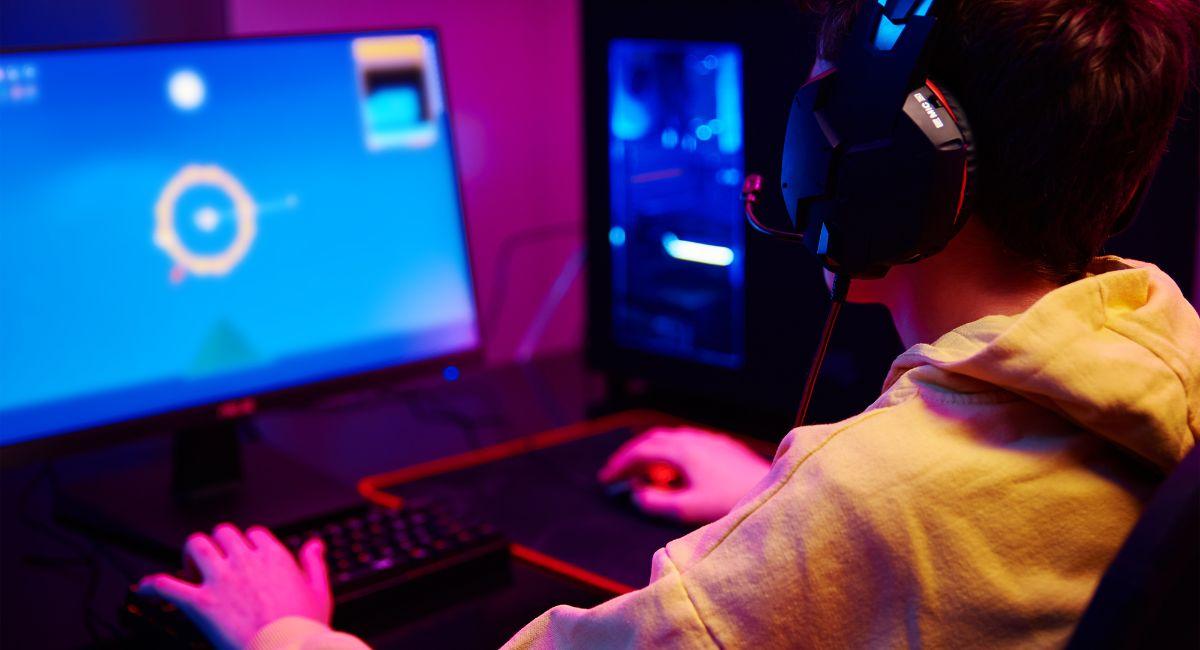Top 10 Ways Web3 Gaming Is Singnificantly Transforming The Gaming Landscape Through P2E

The gaming industry has undergone a revolutionary transformation with the advent of Web3 technologies. Web3 gaming, a decentralized approach to gaming ecosystems, has introduced Play-to-Earn (P2E) models and intricate in-game economies that redefine the traditional gaming experience.
Understanding Web3 Gaming

Web3 Technology Overview
Web3 represents the next phase of the internet, emphasizing decentralization, transparency, and user empowerment. In the context of gaming, Web3 leverages blockchain and decentralized technologies to reshape how games are developed, played, and monetized.
Play-to-Earn (P2E) Revolution
P2E is a groundbreaking concept within Web3 gaming, allowing players to earn real-world value through in-game activities. This model challenges the conventional notion of gaming as a leisure activity by transforming it into a potential source of income.
In-Game Economies: A New Frontier

The concept of in-game economies represents a new frontier in the gaming industry, introducing virtual markets, currencies, and economic systems within video games. This phenomenon has become increasingly prevalent as games evolve into expansive virtual worlds. Here’s a comprehensive exploration of the dynamics, challenges, and opportunities within in-game economies:
- Virtual Currencies and Assets:
- In-game economies often revolve around virtual currencies, which players earn through gameplay or real-money purchases. These currencies can be used to buy in-game assets such as weapons, skins, characters, and other items.
- Player-Driven Markets:
- In many games, the in-game economy is driven by player interactions. Players can trade, buy, and sell virtual assets with each other, creating a player-driven market where supply and demand dynamics come into play.
- Microtransactions and Monetization:
- Many game developers implement microtransactions, allowing players to buy virtual goods with real money. This monetization strategy contributes to the in-game economy, with players spending real currency to enhance their gaming experience.
- Cryptocurrencies in Gaming:
- Some games have explored integrating blockchain technology and cryptocurrencies into their economies. This allows for unique digital ownership and verifiable scarcity of in-game assets, fostering a sense of rarity and value.
- Challenges in Balancing Economies:
- Game developers face challenges in balancing their in-game economies to prevent inflation or deflation. Properly calibrating the earning rates, costs, and scarcity of virtual assets is crucial to maintaining a stable and enjoyable in-game economy.
- Emergence of Player-Run Businesses:
- In certain virtual worlds, players have created their own businesses within the game. This includes activities like crafting, trading, or offering in-game services, creating a dynamic economic ecosystem within the game.
- Cross-Platform Economies:
- With the rise of cross-platform gaming, economies may span multiple platforms and games. Players might accumulate virtual assets or currencies in one game and transfer or utilize them in another, enhancing the interconnectedness of virtual economies.
- Regulatory Considerations:
- The introduction of real-money transactions in games has raised regulatory questions regarding the status of virtual items. Some jurisdictions have begun to examine the legal and financial implications of in-game economies.
- Social and Psychological Impact:
- In-game economies can influence player behavior and social dynamics. Virtual wealth and status within a game may impact a player’s experience and interactions with others, creating a unique blend of gaming and economic psychology.
- Potential for Real-World Impact:
- The success of in-game economies has led to discussions about their potential impact on real-world economies. Virtual economies could serve as experimental grounds for economic theories or even influence discussions on topics like inflation and scarcity.
In-game economies represent a fascinating intersection of gaming, economics, and technology. As the gaming industry continues to innovate, the dynamics of virtual economies will likely evolve, creating new challenges and opportunities for both developers and players in this emerging frontier.
Also, read- Unraveling The Challenge Of Achieving Zero-Fraud Security In Web3 Gaming
Decentralized Autonomous Organizations (DAOs) in Gaming

Decentralized Autonomous Organizations (DAOs) have emerged as a revolutionary concept in the blockchain and cryptocurrency space, and their application to gaming introduces innovative possibilities. Here’s an exploration of how DAOs intersect with the gaming industry:
- Definition of DAOs:
- DAOs are entities governed by smart contracts and run on blockchain technology. They operate with decentralized decision-making processes, allowing participants to vote on proposals that can influence the direction of the organization.
- Player Governance:
- DAOs in gaming empower players with direct governance over certain aspects of a game or gaming platform. Decisions related to in-game features, updates, rules, and even economic parameters can be collectively made by the community through a DAO’s voting mechanism.
- Token-Based Voting:
- DAOs typically use tokens to represent voting power. Players who hold these tokens can participate in the decision-making process proportionate to their holdings. This token-based system ensures that participants with more significant contributions or stake have a more substantial say in the decisions.
- Decentralized Development Funding:
- DAOs can serve as a means to fund and support game development projects. Participants in the gaming community can collectively decide which projects or developers to fund by voting on proposals within the DAO.
- Virtual Asset Ownership:
- DAOs enable players to collectively own and manage virtual assets within a game. For example, a DAO could collectively own rare in-game items, and decisions regarding their use or sale could be made through community voting.
- Community-Driven Economies:
- Gaming DAOs contribute to the creation of community-driven economies within games. Players have a direct role in determining the economic rules, virtual currency policies, and trade mechanisms, fostering a more participatory and democratic gaming environment.
- Governance of Metaverse Platforms:
- DAOs are particularly relevant in the context of emerging metaverse platforms. Decisions regarding the rules, development, and evolution of a metaverse can be collectively determined by the community through DAO governance.
- Incentivizing Participation:
- DAOs often incentivize active participation through rewards and token distributions. Players who actively contribute to the DAO’s goals may receive additional tokens or benefits, encouraging ongoing engagement and involvement.
- Smart Contracts for Transparency:
- Smart contracts within DAOs provide transparency and security. The rules and processes coded into smart contracts ensure that decisions are executed automatically, and the outcomes are transparent and verifiable on the blockchain.
- Challenges and Considerations:
- Implementing DAOs in gaming involves overcoming challenges such as scalability, ensuring fair governance, preventing collusion, and addressing potential security vulnerabilities. Developers need to carefully design DAO structures to balance decentralization with practical considerations.
In summary, the integration of DAOs in gaming introduces a paradigm shift, granting players unprecedented influence and ownership within virtual worlds. The decentralized and transparent nature of DAOs aligns with the principles of blockchain technology, fostering community-driven decision-making and creating novel opportunities for collaboration and innovation in the gaming industry.
The gaming industry is projected to grow by nearly $100bn over the next 4 years.
Portal is placing Web3 at the heart of this growth cycle by connecting the best of blockchain gaming with mainstream audiences. We can’t wait to show you more. pic.twitter.com/B6U3lITRoV
— Portal (@Portalcoin) January 5, 2024
Challenges and Opportunities

Play-to-Earn (P2E) Web3 gaming represents a transformative shift in the gaming industry, leveraging blockchain technology and decentralized principles. While this paradigm brings forth exciting opportunities, it also poses certain challenges. Here’s an exploration of the challenges and opportunities in P2E Web3 gaming:
Challenges:
- Blockchain Scalability:
- Challenge: Many blockchain networks face scalability issues, limiting the speed and number of transactions processed per second.
- Impact: Slow transaction speeds can hinder the gaming experience, leading to delays and potential frustrations for players.
- User Onboarding Complexity:
- Challenge: Onboarding new players into P2E games involves setting up blockchain wallets, acquiring cryptocurrencies, and understanding blockchain concepts.
- Impact: The complexity may deter mainstream gamers from adopting P2E games, limiting their overall reach.
- Market Volatility and Tokenomics:
- Challenge: P2E games often involve native tokens or cryptocurrencies with varying values, subject to market volatility.
- Impact: Players may experience uncertainty regarding the value of their in-game earnings, impacting the perceived value of their time and effort.
- Regulatory Uncertainty:
- Challenge: The regulatory landscape for blockchain gaming is still evolving, leading to uncertainties regarding legal frameworks.
- Impact: Developers may face challenges in navigating legal requirements, and players may be concerned about the legitimacy of in-game assets.
- Security Concerns:
- Challenge: Smart contract vulnerabilities, hacking incidents, and other security risks pose threats to P2E games.
- Impact: Security breaches can lead to financial losses for players and damage the reputation of the game and the underlying blockchain technology.
Opportunities:
- True Ownership of Assets:
- Opportunity: P2E games enable players to truly own in-game assets as non-fungible tokens (NFTs), providing real-world value and ownership.
- Impact: This fosters a sense of ownership and investment, encouraging player engagement and fostering a secondary market for in-game assets.
- Economic Empowerment and Income:
- Opportunity: P2E games allow players to earn real-world income through in-game activities, leveling the playing field for global gamers.
- Impact: This economic empowerment can attract a diverse player base and incentivize sustained engagement.
- Community Governance and Decision-Making:
- Opportunity: Decentralized governance through tokens allows players to have a say in the game’s development and direction.
- Impact: Community-driven decision-making can enhance player satisfaction and result in games that better align with user preferences.
- Interoperability and Cross-Platform Integration:
- Opportunity: Web3 and blockchain technology facilitate interoperability, allowing in-game assets to be used across different games and platforms.
- Impact: Players can experience a seamless transition between games, and developers can create interconnected virtual worlds.
- Innovative Monetization Models:
- Opportunity: P2E games enable new monetization models, such as play-to-earn, where players are rewarded for their time and skills.
- Impact: This innovation can disrupt traditional gaming monetization methods and create more equitable reward systems.
- Enhanced Player Trust and Transparency:
- Opportunity: Blockchain’s transparency ensures that game mechanics, scarcity of assets, and reward systems are verifiable.
- Impact: This builds trust among players, as they can be confident in the fairness and transparency of the game ecosystem.
- Emergence of Play-to-Earn Ecosystems:
- Opportunity: Entire ecosystems can emerge around P2E games, including marketplaces, decentralized finance (DeFi) integration, and virtual real estate.
- Impact: This creates a thriving and interconnected web of economic activities, providing diverse opportunities for both players and developers.
In navigating the challenges and capitalizing on the opportunities, P2E Web3 gaming has the potential to reshape the gaming landscape, fostering a more inclusive and player-centric industry.
The Future of Web3 Gaming

The future of Web3 gaming holds immense promise, driven by the convergence of blockchain technology, decentralized systems, and the gaming industry. Here are several key trends and possibilities that could shape the future of Web3 gaming:
- Mass Adoption of Play-to-Earn (P2E) Models:
- P2E models, where players can earn real-world value through in-game activities, are likely to become more prevalent. This could incentivize a broader audience to participate in Web3 gaming, bridging the gap between gamers and blockchain technology.
- Cross-Platform Interoperability:
- Web3 gaming may witness increased interoperability, allowing players to use and transfer in-game assets seamlessly across different games and platforms. This interconnected ecosystem could enhance player experiences and foster creativity in game design.
- Decentralized Autonomous Organizations (DAOs) in Game Development:
- DAOs may play a significant role in the governance and decision-making processes of game development. Community-driven development, where players have a direct say in the evolution of games, could become a standard practice.
- Integration of Virtual and Augmented Reality (VR/AR):
- The integration of Web3 gaming with VR and AR technologies could create immersive and interactive gaming experiences. Players might engage with decentralized virtual worlds using VR headsets, enhancing the overall gaming experience.
- Blockchain Scalability Solutions:
- Scalability challenges associated with blockchain networks could be addressed with the implementation of advanced scaling solutions. This would result in faster transaction processing times, reducing latency issues in Web3 games.
- Evolution of Virtual Economies:
- Virtual economies within Web3 games may evolve to become more complex and dynamic. The emergence of decentralized finance (DeFi) mechanisms within gaming ecosystems could further contribute to the sophistication of in-game economies.
- NFTs and Digital Collectibles:
- Non-fungible tokens (NFTs) and digital collectibles are likely to remain integral to Web3 gaming. NFTs could represent unique in-game assets, characters, or achievements, providing players with true ownership and the ability to trade valuable items.
- Web3 Gaming Marketplaces:
- Dedicated marketplaces for buying, selling, and trading in-game assets may proliferate. These marketplaces could facilitate a secondary economy where players can monetize their gaming investments.
- Innovative Monetization Models:
- Web3 gaming is expected to continue exploring innovative monetization models beyond traditional microtransactions. Play-to-earn, decentralized advertising, and token-based incentives for engagement could redefine how gamers contribute to and benefit from gaming ecosystems.
- Environmental Sustainability Efforts:
- The environmental impact of blockchain-based gaming may become a focal point. Efforts to explore and implement more sustainable consensus mechanisms or eco-friendly blockchain solutions could gain prominence.
- Regulatory Developments:
- As Web3 gaming becomes more mainstream, regulatory frameworks and guidelines specific to blockchain gaming may emerge. Clearer regulations could provide a more stable environment for developers and players.
- Educational Initiatives and User-Friendly Interfaces:
- Efforts to simplify user onboarding processes and educate players about blockchain technology may increase. User-friendly interfaces and intuitive experiences could be crucial for mainstream adoption.
In essence, the future of Web3 gaming is poised to be dynamic, ushering in new levels of player engagement, ownership, and creativity. As the industry continues to mature, collaboration between game developers, blockchain innovators, and the gaming community will likely be key to unlocking the full potential of Web3 gaming.
Conclusion
Web3 gaming has ushered in a paradigm shift in the gaming industry, redefining how players interact with virtual worlds and introducing innovative economic models. The combination of P2E, tokenization, and decentralized governance is transforming gaming from a recreational activity to a dynamic and potentially profitable ecosystem. As the Web3 gaming landscape evolves, it promises to reshape the very fabric of the gaming experience as we know it.



























































